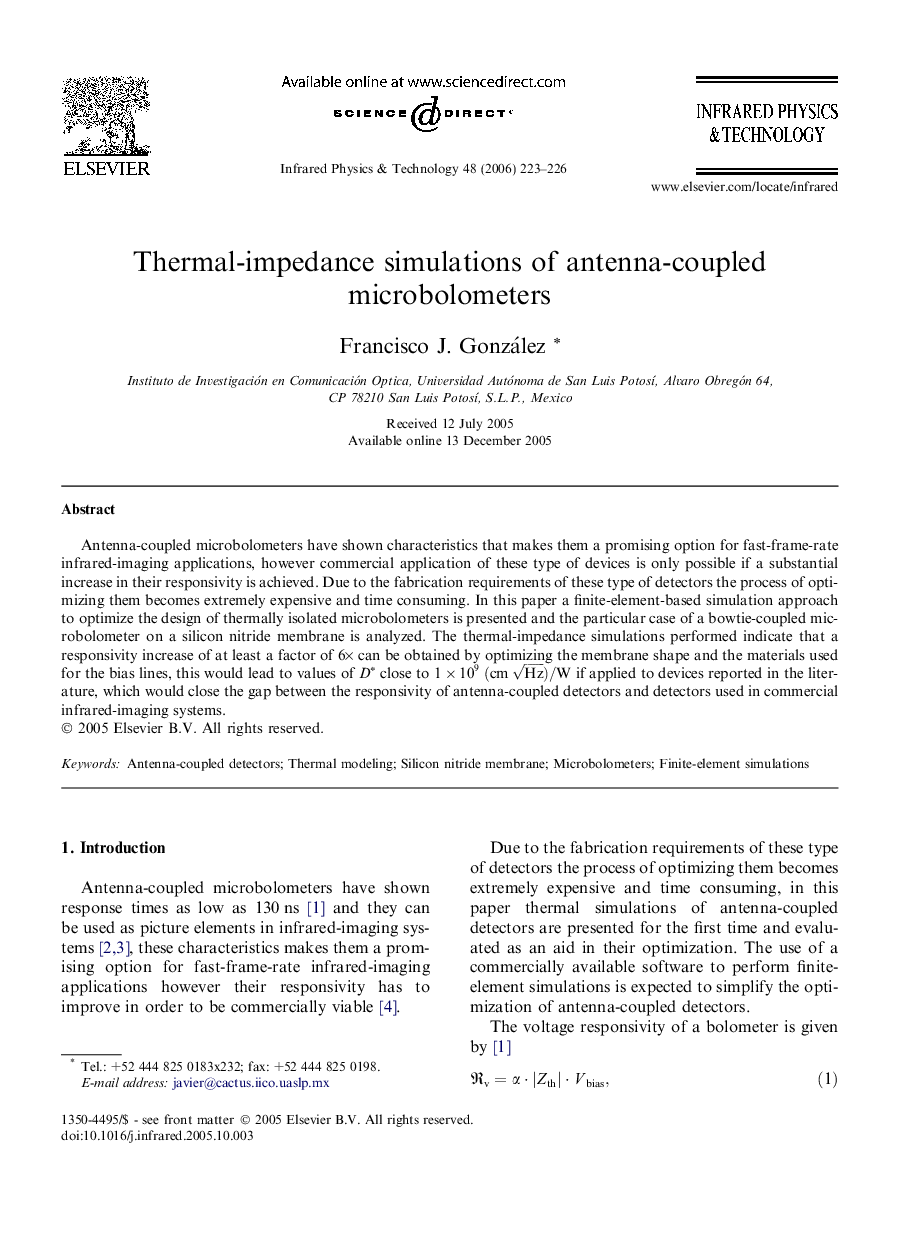| Article ID | Journal | Published Year | Pages | File Type |
|---|---|---|---|---|
| 1785183 | Infrared Physics & Technology | 2006 | 4 Pages |
Antenna-coupled microbolometers have shown characteristics that makes them a promising option for fast-frame-rate infrared-imaging applications, however commercial application of these type of devices is only possible if a substantial increase in their responsivity is achieved. Due to the fabrication requirements of these type of detectors the process of optimizing them becomes extremely expensive and time consuming. In this paper a finite-element-based simulation approach to optimize the design of thermally isolated microbolometers is presented and the particular case of a bowtie-coupled microbolometer on a silicon nitride membrane is analyzed. The thermal-impedance simulations performed indicate that a responsivity increase of at least a factor of 6× can be obtained by optimizing the membrane shape and the materials used for the bias lines, this would lead to values of D∗ close to 1×109(cmHz)/W if applied to devices reported in the literature, which would close the gap between the responsivity of antenna-coupled detectors and detectors used in commercial infrared-imaging systems.
